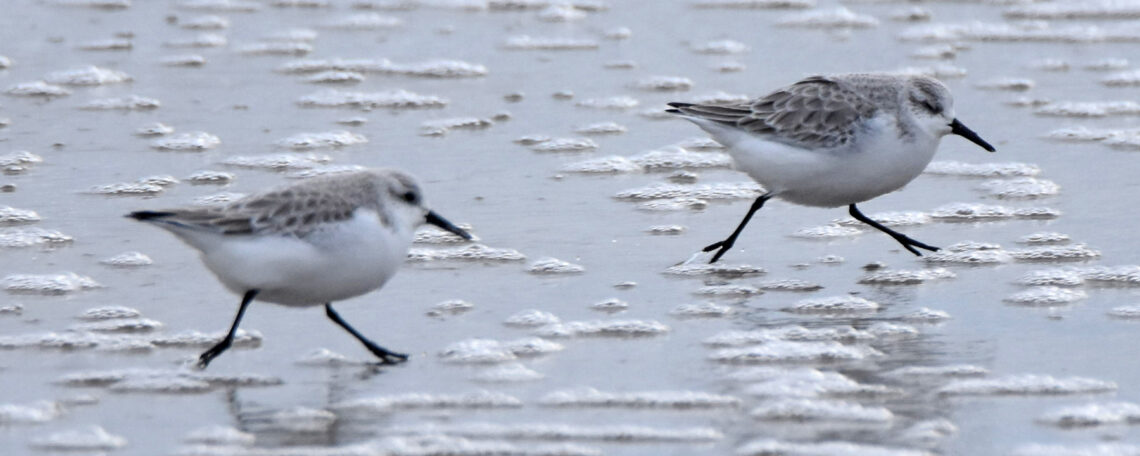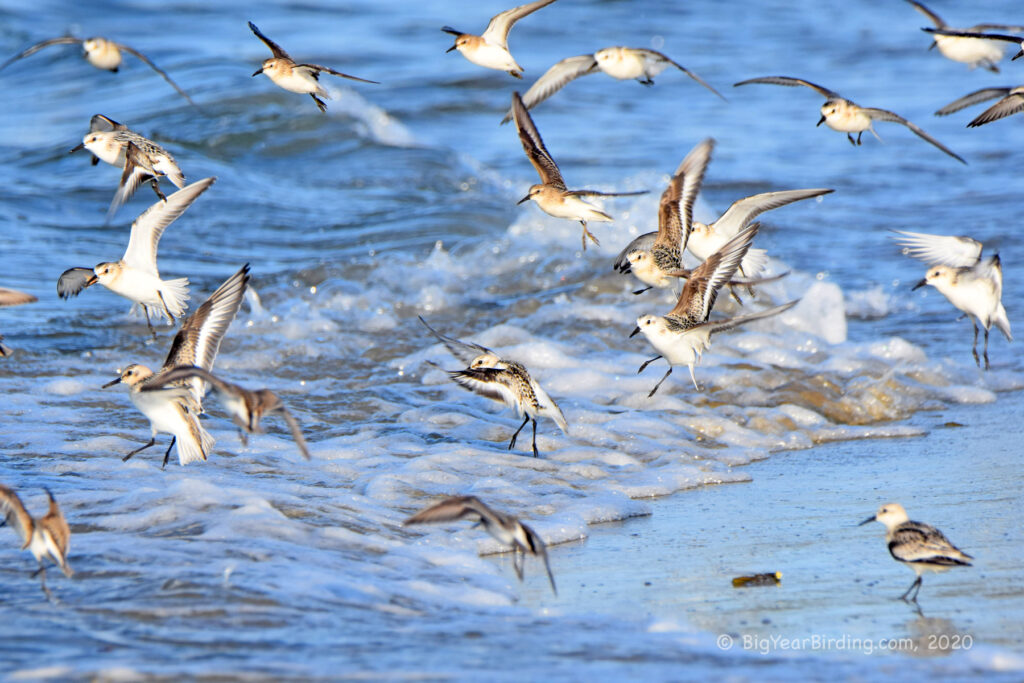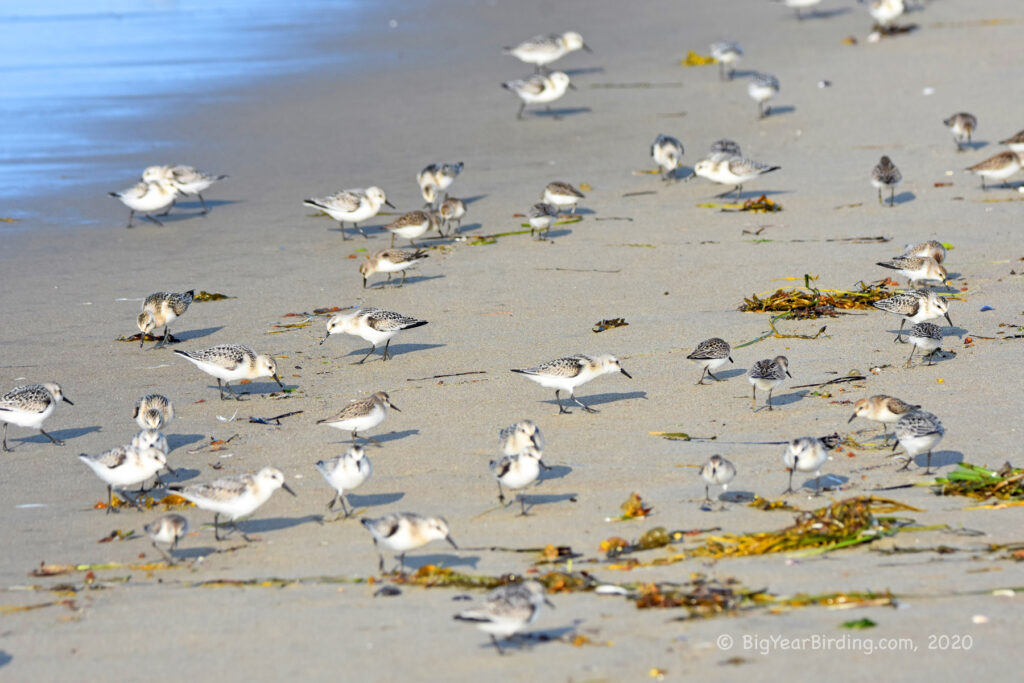
The Sanderling is a small shorebird that breeds in the high Arctic tundra and spends the non-breeding season on sandy beaches around the world. They measure about 7 inches in length and weigh around 2 ounces. Sanderlings have a stout, pointed bill, a short neck, and a rounded head, which makes them easy to identify. In breeding plumage, their feathers have a rusty brown hue on their upper parts, but during the non-breeding season, they are pale grayish-white all over.

One of the distinguishing field marks of a Sanderling is their habit of running in and out of the waves on the beach. They are speedy runners and have black legs, which contrast with their white underparts. They have a distinctive pattern of black markings on their wings that is visible in flight. During migration, Sanderlings gather in large flocks, which can number in the thousands, and move along the coastlines.
Sanderlings breed in the high Arctic and spend the winter months on sandy beaches from North America to South America, Africa, Europe, and Asia. They are considered long-distance migrants and travel up to 6,000 miles each way between their breeding and wintering grounds. During migration, they stopover at a variety of sites along their route to rest and refuel. Some of their favored stopover sites include the Delaware Bay in the US, the Wadden Sea in Europe, and the Yellow Sea in Asia.
Sanderlings feed on small invertebrates that they pick from the sand and mud on the beach. Their bills are specially adapted to probe quickly through the sand to locate prey. During migration, they also feed on horseshoe crab eggs, which are an important food source for many shorebirds. Despite their small size, Sanderlings have a high metabolism and must eat frequently to maintain their energy levels.

In recent years, Sanderling populations have shown a decline in some areas. Habitat loss due to coastal development and disturbances from human activities, such as beach recreation, can affect their feeding and resting areas. Climate change is also a concern, as rising sea levels and changes in weather patterns can impact their breeding and migration. Conservation efforts, such as habitat restoration and protection, are important for maintaining healthy Sanderling populations.

